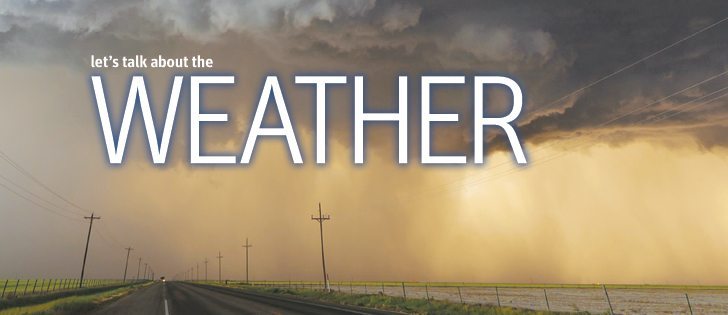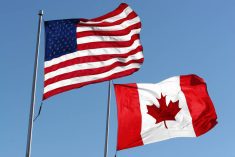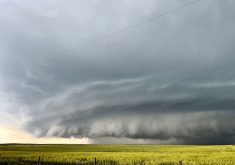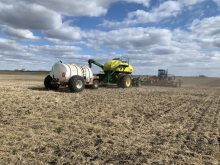Weather forecasting is going to become more accurate and user-friendly in the next five years.
Jim Block, chief meteorologist with Schneider Electric, the parent company of DTN, said there will be more public and private weather stations churning out data every five to 60 minutes.
For instance, DTN plans to nearly double its network of 4,000 weather stations by the end of 2016.
Modern electronics have led to the creation of cheap, compact, high-tech weather stations that provide a steady stream of reliable precipitation and temperature data.
Read Also

Proactive approach best bet with looming catastrophes
The Pan-Canadian Action Plan on African swine fever has been developed to avoid the worst case scenario — a total loss ofmarket access.
“What we’re seeing right now today is this explosion in the number of stations,” Block told delegates attending DTN’s Ag Summit 2015.
The data will be augmented by millions of observations generated by “connected vehicles” that can provide real time temperature and precipitation data.
“In the next five years, you’ll be seeing a lot of vehicle information that’s going to be made available and be used in weather forecasting,” he said.
Mobile phones are already able to measure barometric pressure and temperature and will be even more sophisticated in the future.
Block said the additional data will make forecasts more accurate, but the computer models that assimilate and analyze the data are also becoming more sophisticated.
Europe’s Integrated Forecast System weather model is the best in the business with a resolution of 16 kilometres between grid points. The closer the grid points, the more accurate the forecast.
“In March, the European model is going down to a resolution of 10 km,” he said.
“The reason that the European model is the best model in the world is because they have the biggest and faster computer running weather modeling.”
The U.S. National Weather Service and other global agencies are also upgrading their weather models.
Today’s weather forecasters are able to produce useful information out to about eight days. By 2020 they should be able to extend that to 10 days.
Forecasting skill doubles every 15 years. The 36-hour forecast was accurate 25 percent of the time when it debuted in 1955 and today is approaching 90 percent accuracy.
Block said the switch to more probabilistic forecasts is another trend emerging in weather forecasting.
Instead of saying there is a 50 percent chance that it’s going to be 20 C on Tuesday, forecasters can say there is a 95 percent chance that the temperature will exceed 17 C and a five percent chance it will get above 22 C.
“You can not only look at the forecast itself but you can understand how much uncertainty there is in that forecast,” he said.

















